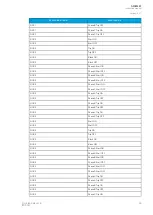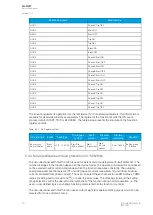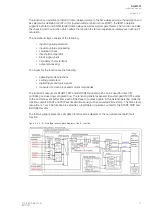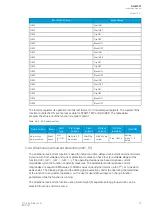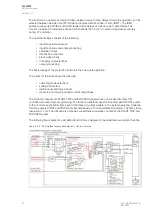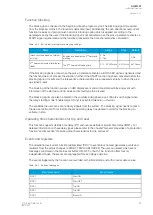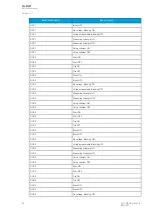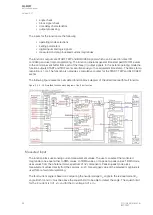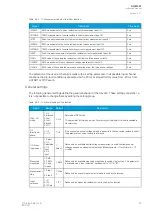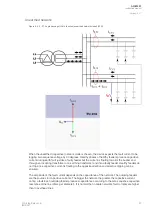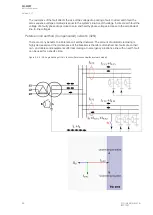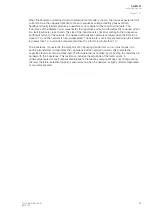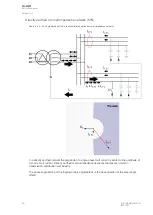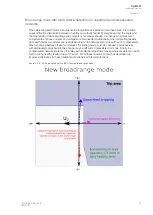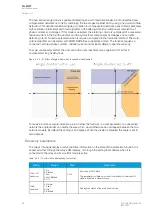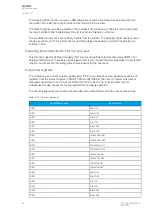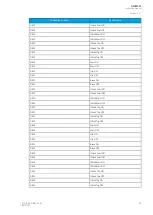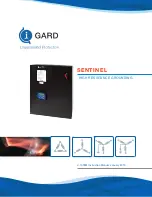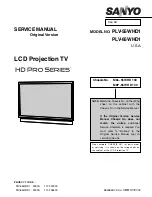
Event block name
Event names
DOC4
Voltage measurable, Blocking OFF
DOC4
Measuring live angle ON
DOC4
Measuring live angle OFF
DOC4
Using voltmem ON
DOC4
Using voltmem OFF
The function registers its operation into the last twelve (12) time-stamped registers; this information is
available for all provided instances separately. The register of the function records the ON event
process data for START, TRIP or BLOCKED. The table below presents the structure of the function's
register content.
Table. 5.4.4 - 70. Register content.
Register name
Description
Date and time
dd.mm.yyyy hh:mm:ss.mss
Event
Event name
Fault type
L1-E...L1-L2-L3
Pre-trigger current
Start/Trip -20ms current
Fault current
Start/Trip current
Pre-fault current
Start -200ms averages
Trip time remaining
0s...1800s
Used SG
Setting group 1...8 active
Operating angle
0...250°
5.4.5 Directional earth fault protection (I0dir>; 67N/32N)
The directional earth fault function is used for instant and time-delayed earth fault
protection. A device with both voltage and current protection modules can have four (4) stages in the
function (I0dir>, I0dir>>, I0dir>>>, I0dir>>>>). The operating decisions are based on selected neutral
current and voltage magnitudes which the function constantly measures. The available residual current
magnitudes are RMS values, TRMS values (including harmonics up to 31
st
), or peak-to-peak values
that come from inputs I01 or I02 (residual current measurement) or from I0Calc (residual current
calculated from phase current measurements). The current angle is compared to the angle of
measured or calculated zero sequence voltage. A certain amount of zero sequence voltage has to be
present to activate the trip. The blocking signal and the setting group selection control the operating
characteristics of the function during normal operation, i.e. the user or user-defined logic can change
function parameters while the function is running.
The directional earth fault function uses a total of eight (8) separate setting groups which can be
selected from one common source.
The function can operate on instant or time-delayed mode. In the time-delayed mode the operation can
be selected for definite time (DT) or for inverse definite minimum time (IDMT); the IDMT operation
supports both IEC and ANSI standard time delays as well as custom parameters.
The operational logic consists of the following:
• input magnitude selection
• input magnitude processing
• threshold comparator
A
AQ
Q-M257
-M257
Instruction manual
Version: 2.07
© Arcteq Relays Ltd
IM00021
83
Summary of Contents for AQ-M257
Page 1: ...AQ M257 Motor protection IED Instruction manual...
Page 2: ......

